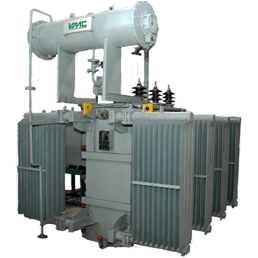Table of Contents
ToggleSteps for Transformer overhauling
Overhauling of transformer is required either due to ageing of transformer or due to fault of transformer & after rectification of fault.
Draining of complete oil in tank or Barrels Before draining the oil, the oil in the transformer tank should be heated up by a separate hot oil circulator at around 70 0C.
so that when the oil is totally drained out, the core and winding assembly will have temperature higher than ambient. This will note be exposed without oil for more than 12 hrs.
Before this period either the assembly should be filled with new oil or nitrogen or should be subjected to vacuum. Before draining the oil, the external surface of tank and fittings should be cleaned to locate the point of leakage.
Dismantling of all the fittings of the transformer such as HT & LT Bushings, conservator, explosion vent, Buchholz relay, radiators, top cover, inspection cover etc. including hiring of crane.
Overhauling of OLTC
Hot oil washing of diverter and selector chamber after untanking diverter switches.
Untanking divertor switches.
Cleaning of fixed and moving contacts.
Tightening of all the clamping hardware.
Replacing all the oil sealing gaskets.
Greasing of gears in driving mechanism.
Replacement lubricating oil in gear box.
Washing of core coil assembly
Washing of core coil assembly by hot oil jet to remove sludge, carbon deposition and any other foreign particles deposited over it.
Tightening of core studs and checking its IR value.
Tightening pressure screws for axial tightness of coil
Attending to any minor abnormalities on core coil assembly
Paper covering to main leads wherever required
Flushing of radiators.
Cleaning the tank inside by hot oil jet without untanking core and winding assembly
Preparation and replacement of all the oil sealing gaskets made form rubberized cork sheet confirming to grade RC80 C of IS 4253 (Part-II) 1960 for whole transformer.
Drying out of core and winding procedure
Equalizing diverter chamber of OLTC with main tank, so that the diverter chamber is not subjected to pressure during vaccum.
Vacuum pulling by a separate vacuumed pump up to 700 mm or more, provided the tank and cover does not have permanent deflection due to vacuum. For 12 hrs after attaining 700 mm vacuum.
After every vacuum cycle, the quantity of water collected in then condensate of vacuum system is to be measured and noted for the purpose of knowing the rate of water extracted from the core and winding insulation.
The new oil in storage tank is filtered by two stage high vacuum filter machine of minimum 4500 LPH capacity and impregnated in transformer tank under vacuum. After oil filling the oil in the transformer tank is filtered to raise the temperature , to 65-70 0C after raising the temperature.
The oil is drained out and dry nitrogen having 99.5% dryness is injected. The nitrogen is kept in the transformer for about 12 to 24 hrs. at least 2/3 cycles to be given. IR value to be measured after each cycle.
Dismantling and refitting of all the fittings of the transformer such as HT & LT Bushings, conservator, explosion vent, Buchholz relay, radiators, top cover, inspection cover etc. including hiring of crane.
Filtration of Oil
After the drying out cycles are over the oil in the transformer is filtered till the oil BDV and water content values are achieved as required by IS 1866-1983. During this final filtration, a separate degassing column with separate vacuum pump should be used to get better dehydration of oil .
During filtration the radiator bank should also be filtered separately or along with filtration should two stage, high vacuum machine of minimum 4500 LPH capacity. After filtration the oil will be tested for BDV in presence of engineer site. The BDV value should meet requirement as per IS : 1866-1983. After filteration the oil sample will be tested for water content (PPM). The results should meet requirement as per IS : 1866-1983. Testing of oil for DGA.
Degreasing and derusting all the all the external surface of tank and fittings . Applying one coat of metal primer at the rusted spots. Applying two coats of synthetic enamel paint having ISI mark.
Testing of transformer for all possible site tests in presence of engineer and commissioning of transformer.


Pingback: What is Transformer Vector Group and Types of Vector group